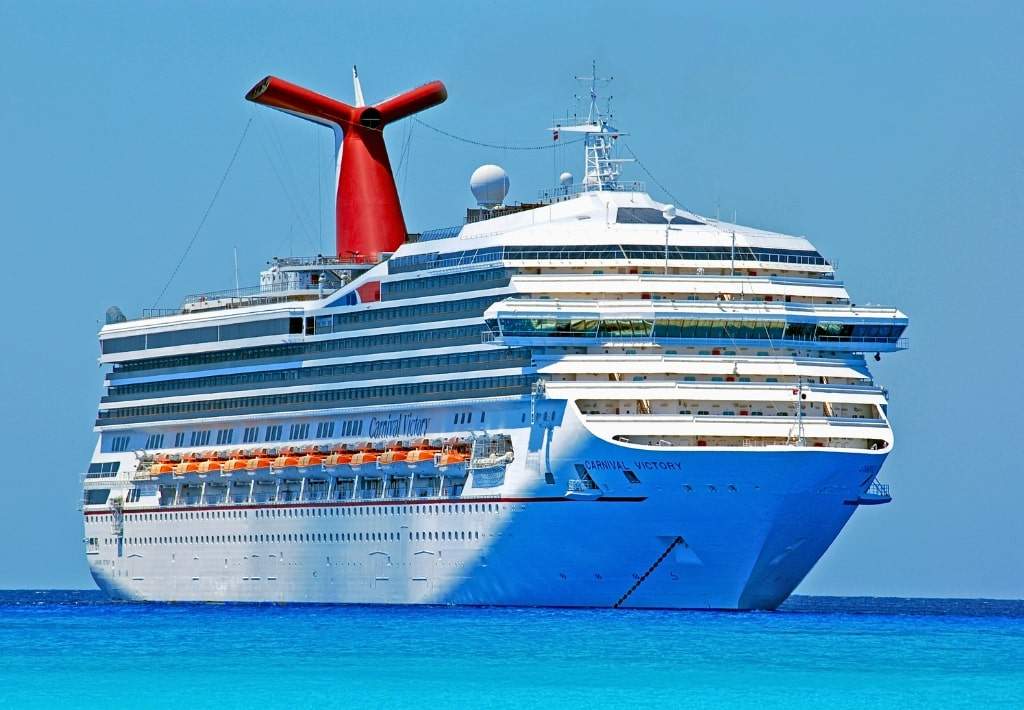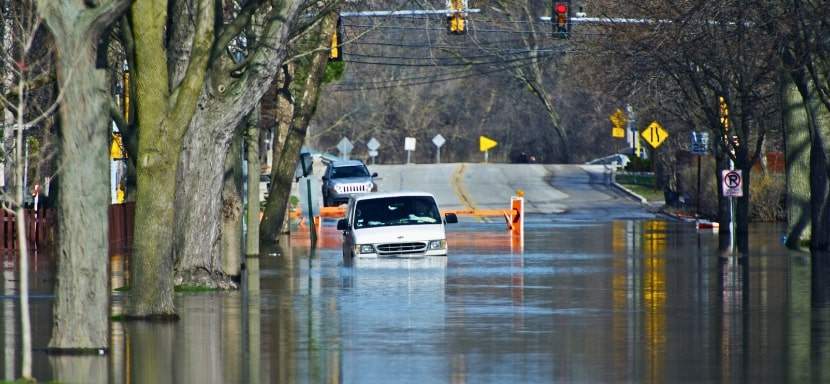How to Survive a Shipwreck

Shipwreck Survival Guide
Cruise ships are so big that they can give you a false sense of security. The reality is that they can still sink to the bottom of the ocean. However, this doesn’t mean you must go down with the ship.
The immense size and larger accommodations of present-day cruise ships increase the potential loss of life and cargo in each shipwreck.
One of the most famous modern sea disasters was the sinking of the Titanic in 1912 by hitting an iceberg. Almost exactly 100 years later, the cruise ship Costa Concordia hit underwater rocks and left 32 people dead in 2012.
Shipwrecks are harrowing experiences that can test one’s physical and mental resilience.
However, with the proper knowledge and preparation, surviving a shipwreck is possible and achievable.
This guide explores actionable strategies and survival techniques to help you navigate the stormy seas of adversity and emerge victorious.
Understanding the Risks
Shipwrecks are not merely the stuff of maritime legends; they are authentic, tangible threats seafarers face regularly. Understanding the risks associated with shipwrecks is the first step toward ensuring your safety and survival at sea.
Common Causes of Shipwrecks
- Inclement Weather: Mother Nature can be unforgiving, and nowhere is this more evident than at sea. Storms, hurricanes, and rogue waves can wreak havoc on even the sturdiest vessels, causing them to capsize or run aground.
- Navigational Errors: Navigating the vast expanse of the ocean requires precision and accuracy. Unfortunately, navigational errors, whether due to human error or faulty equipment, can lead ships off course and into dangerous waters.
- Mechanical Failures: Despite technological advances, mechanical failures are still a common cause of shipwrecks. Engine malfunctions, equipment breakdowns, and structural weaknesses can leave ships vulnerable to disaster.
- Collisions: The risk of collisions is ever-present in crowded shipping lanes and congested harbors. With other vessels, underwater obstacles, or coastal terrain, collisions can result in severe damage and potential sinking.
- Human Factors: From fatigue and inexperience to negligence and recklessness, human factors play a significant role in many shipwrecks. Poor decision-making, miscommunication, and lapses in judgment can all contribute to maritime disasters.
Shipwreck Survival Tips and Strategies
Learn vital techniques such as shelter building, water sourcing, fire starting, and signaling for rescue to enhance your chances of survival in remote and challenging environments.
Think Before You Leap
Once you ensure the ship is sinking, assess the situation and be careful with passengers acting in panic situations. Your priority is to find and don a life jacket or personal floatation device (PFD). Swimming in the ocean is not like swimming in a pool. Waves and currents will wear you down, and you cannot tread water very long.
Don’t immediately leap overboard or jump into a lifeboat once you have your life vest or other floatation device. Stay on the ship as long as possible; the Coast Guard or rescuers may arrive long before the boat goes down.
Did You Know?
When it sank, the HMS Titanic only had enough life raft seats for about a third of its passengers.
Abandon Ship
When it’s imminent that you will need to abandon the ship, make your way to the high side of the vessel. This will keep you from being crushed if the ship or boat decides to
After arriving on the high side of the ship, you’ll want to jump from as low as possible and no higher than about 15 feet.
You will hit the water somewhat hard, and your floatation device keeps you from being underwater for a long time.
Jump Right
This is not the time to dive head-first into the water; you will want to go feet-first.
Ensure the area is clear of other survivors and lifeboats already in the water. Keep your shoes on (if applicable), cross your legs, have one hand across your abdomen, and hold your nose with the other.
Once you hit the water, be aware of what’s around you and start swimming.
Evacuation Procedures: Techniques for Safely Exiting a Sinking Ship
Surviving a shipwreck requires quick thinking and decisive action, especially when evacuating a sinking vessel.
Here are some expert survival tips and strategies to help you safely exit a sinking ship:
- Stay Calm and Assess the Situation: Keep a level head and assess the severity of the situation. Look for nearby lifeboats or flotation devices.
- Follow Crew Instructions: If available, follow the instructions of the ship’s crew or designated safety personnel. They are trained to handle emergencies.
- Locate Nearest Exit Points: Familiarize yourself with the location of emergency exits and evacuation routes before departure.
- Don life jackets immediately upon hearing the alarm or receiving evacuation instructions. Ensure they are properly fastened and adjusted.
- Stay Low if Smoke is Present: In the event of smoke or fire, stay low to the ground, where the air will likely be more transparent and relaxed.
- Use Handrails and Grab Handles: As you move towards the exit points, use handrails and grab handles to maintain stability, especially if the ship is listing.
- Stay Together if Possible: Stay with your group or family to provide mutual support and assistance.
- Stay Informed: Listen for announcements or updates from the ship’s crew regarding the evacuation process and any changes in the situation.
- Assist Others if Able: If you are physically able, assist children, elderly passengers, or individuals with disabilities in reaching safety.
- Stay Clear of Propellers: If you abandon a ship in the water, avoid the ship’s propellers and any other hazards to avoid injury.

Swim Like a Fish
When a ship begins to sink, there is a suction effect that sucks everything down around it.
If you find yourself in the water, you’ll want to swim away from the ship as quickly as possible. This will keep you from being pulled down and avoid falling debris from above.
A ship’s fuel and oil tanks can also rupture, and the fluid inside will float on the water. Keep swimming until you’ve cleared the area in case these flammable liquids ignite and burst into flames.
Don’t Drink the Water
Seawater is saturated with salt, and salt will cause dehydration. You can live a lot longer without food than water.
Avoid eating anything for as long as possible; it only makes you crave more water.
When it rains, try to capture water with tarps, plastic bottles, or anything else you can scavenge from the shipwreck.
Did You Know?
Unsinkable Sam was a cat that served on various ships during WWII. Three of those ships sank, and Sam survived each time.
Once in the Water
Surviving in open water after a shipwreck requires specific skills and strategies to stay afloat and conserve energy.
Here are some expert tips to help you navigate the challenges of water survival:
- Remain Calm and Conserve Energy: Panicking can lead to exhaustion and decrease your chances of survival. To stay calm and conserve your energy, float on your back and regulate your breathing.
- Use Floatation Devices: Use any floatation devices or debris to support your body weight and stay afloat. Life jackets, seat cushions, or even pieces of wreckage can provide buoyancy.
- Tread water Efficiently: Use slow and controlled movements to tread water, alternating between gentle kicks and arm movements. Avoid splashing excessively, as this can waste energy.
- Maintain Body Heat: In cold water, focus on retaining body heat by keeping your body as still as possible. Tuck your arms and legs close to your body to minimize heat loss.
- Scan the Horizon for Rescue: Look for passing ships, aircraft, or other potential rescuers. Signal for help using reflective materials, waving arms, or shouting.
- Stay Hydrated: Resist the urge to drink seawater, which can accelerate dehydration. Instead, conserve body fluids by limiting movement and exposure to the sun.
- Float with the Current: If caught in a strong current, conserve energy by floating with the flow rather than fighting against it. Use the current to carry you toward potential rescue points.
- Stay Visible: Increase your visibility to rescuers by wearing bright-colored clothing or signaling with reflective objects. Consider creating improvised signals using clothing or debris.
- Stay Together: Stay close to other survivors whenever possible to provide mutual support and assistance. Use teamwork to conserve energy and maintain morale.
- Remain Hopeful: Keep a positive mindset and focus on the goal of survival. Remember that rescue is possible, and every action you take increases your chances of being found.
How to Don a Life Jacket
STEP 1 – Loosen all straps and buckles to put on the life jackets. Some jackets have a zipper running down the front, allowing you to wear them like a vest. However, many life jackets are designed to be pulled over your head.
STEP 2 – Start from the bottom up. Adjust the waist straps first. Tightening the straps from the bottom up will give you a nice, snug fit around your midsection and prevent it from riding up on you when swimming or paddling. Do not tighten the straps as hard around your chest area as you did around your waist.
STEP 3 – Don’t tightly adjust the shoulder straps to restrict your arm and shoulder movements. Just make sure they’re nice and snug across your shoulders.
STEP 4 – Ensure you tuck in any loose straps after your life jacket is on and secured; you do not want them to hang up on something during a survival situation. You can also shorten them by making a couple of overhand knots before tucking them away.
STEP 5 – Double-check the fit of your life jacket. It should not ride higher than your shoulders if you need to swim. If it does, the coat is too big even when adjusted, or you haven’t tightened the shoulder or waist straps enough. When you lift your arms, the vest is too large for you if there is a big gap between your shoulders and the jacket’s shoulder pieces. You can have someone check by yanking upward on the shoulder straps. If the Personal Floatation Device (PFD) does not ride up and is snug, the vest fits well and will support you in the water.
Hypothermia Kills
Next to drowning, hypothermia is your biggest threat after surviving a sinking ship.
Due to its high density, water will cool your body temperature about 20 times faster than the air around you.
If you’re stuck in the water for an extended period awaiting rescue, wrap your arms around other people and get close to conserve body heat.
If you’re alone in the water, pull your knees up to your chest and turn yourself into a ball with your arms wrapped around your legs.
Dealing with Sharks When Abandoning a Ship
Abandoning a sinking ship can be a terrifying ordeal, especially when sharks may be encountered in the water.
While shark attacks are rare, knowing how to deal with these apex predators can be crucial for surviving a shipwreck.
Here are some essential survival tips for dealing with sharks in such a situation:
Stay Calm and Avoid Panic
Maintaining a calm demeanor is essential when dealing with sharks. While encountering these powerful predators can be intimidating, panicking will only escalate the situation. Remember that sharks are more likely to be curious than aggressive towards humans.
Assess the Situation
Before entering the water, assess the presence and behavior of sharks in your vicinity. Look for signs of aggression, such as dorsal fins cutting through the water or erratic swimming patterns. If possible, wait for any sharks to move away before abandoning the ship.
Avoid Making Sudden Movements
Sudden movements can startle sharks and trigger defensive or predatory behavior. Move slowly and deliberately, avoiding rapid splashing or thrashing that may attract unwanted attention.
Maintain Eye Contact
If you encounter a shark face-to-face, maintain eye contact and appear as large and intimidating as possible. Sharks are likelier to back down if they perceive you as a threat rather than prey.
Do Not Play Dead
Contrary to popular belief, playing dead is not an effective strategy for deterring shark attacks. It may signal vulnerability to the shark, increasing the likelihood of an attack. Instead, maintain a defensive posture and be prepared to defend yourself if necessary.
Use Protective Gear if Available
If you can access protective gear such as a dive knife or spear gun, use it to create a barrier between yourself and any approaching sharks. However, avoid using these weapons aggressively unless necessary, as this may further provoke the shark.
Signal for Help
If you spot sharks in the water while awaiting rescue, use signaling devices to attract the attention of passing vessels or aircraft. Flares, mirrors, and brightly colored clothing can help rescuers locate your position without attracting unwanted attention from sharks.
Stay Together
If you’re part of a group of survivors, stick together and maintain a close formation while in the water. Sharks are less likely to attack a large group of individuals and prefer solitary or isolated targets.
Get Out of the Water as Soon as Possible
The best way to avoid shark encounters is immediately getting out of the water. Once rescued, stay aboard any floating debris or life rafts until help arrives, minimizing the time spent in shark-infested waters.
Related Article: How to Survive a Shark Attack
Signaling for Rescue: Techniques to Gain Attention and Call for Aid While Adrift
When you find yourself adrift at sea, your primary goal is to attract the attention of potential rescuers and signal for help.
Here are some expert tips to attract attention and increase your chances of being rescued:
Use Visual Signals:
- Wave brightly colored clothing, flags, or pieces of fabric to attract attention from passing vessels or aircraft.
- Use a signal mirror to reflect sunlight towards potential rescuers. Aim the mirror’s reflection directly at the target to increase visibility.
Employ Auditory Signals:
- Blow a whistle or shout regularly to alert nearby vessels or aircraft of your presence.
- Bang on metal objects or use a signaling horn to create loud noises that can be heard over long distances.
Light Signals:
- Use a flashlight or strobe light during nighttime or low visibility conditions to signal your location.
- Flash the light in a distinct pattern, such as three short bursts followed by a pause, to indicate that you require assistance.
Smoke Signals:
- If you can access flares or smoke canisters, ignite them to create a visible smoke signal. Ensure that the wind is blowing toward potential rescuers to maximize visibility.
Floatation Devices:
- Inflate and deploy any available floatation devices, such as life rafts or life jackets, to increase your visibility from a distance.
- Attach a small flag or fabric to the floatation device to enhance its visibility in the water.
Related Article: How to Survive on a Deserted Island

Navigation Without Instruments
Navigating at sea without instruments may seem daunting, but with some basic knowledge and guidance, you can learn to navigate effectively.
Here are beginner-friendly tips and strategies to help you get started:
Celestial Navigation Basics:
- Learn about using the sun, moon, and stars to find direction.
- Understand simple techniques for determining your position based on celestial bodies.
Understanding Ocean Currents:
- Get familiar with how ocean currents work and how they can affect your direction.
- Learn to recognize signs of currents, such as floating debris or seaweed.
Observing Wildlife:
- Pay attention to the behavior of birds, fish, and other marine animals.
- Notice how they move and where they gather, as this can give clues about nearby land or currents.
Identifying Landmarks:
- Look for natural features like islands, coastlines, or distinctive cloud formations.
- Learn to recognize these landmarks and use them to orient yourself.
Watching the Weather:
- Start paying attention to weather forecasts and how weather patterns affect the sea.
- Notice changes in wind direction, cloud formations, and other signs of weather changes.
The 15 Most Infamous Shipwrecks in Maritime History
From the tragic tale of the RMS Titanic to the devastating loss of the MV Dona Paz, each shipwreck story is a testament to the ocean’s unfathomable power and the fragility of humanity’s creations.
This list navigates through time and tide, unraveling the circumstances that led to these maritime disasters, the lives they altered, and the lessons they imparted.
- RMS Titanic (1912): The “unsinkable” ship that succumbed to an iceberg on its maiden voyage, resulting in over 1,500 lost lives.
- RMS Lusitania (1915): Sunk by a German U-boat during WWI, causing nearly 1,200 casualties and escalating wartime tensions.
- Bismarck (1941): The pride of Nazi Germany’s Navy sunk after a harrowing chase by the British Navy, taking around 2,000 lives with it.
- USS Arizona (1941): Destroyed during the attack on Pearl Harbor, entombing over 1,000 sailors and Marines.
- Vasa (1628): The Vasa Museum now preserves a Swedish warship that capsized on its maiden voyage due to design flaws.
- Mary Rose (1545): Henry VIII’s flagship that sank battling the French was raised in 1982 and displayed in the Mary Rose Museum.
- SS Andrea Doria (1956): Italian liner that collided with MS Stockholm off Nantucket, highlighting the importance of radar.
- SS Edmund Fitzgerald (1975): Sank in Lake Superior during a storm, losing all crew members onboard.
- Costa Concordia (2012): Ran aground off the coast of Italy due to navigational errors, leading to 32 deaths.
- HMS Royal Oak (1939): Torpedoed by a German U-boat in Scapa Flow, Scotland, with significant loss of life, highlighting the vulnerabilities of naval anchorages.
- MV Dona Paz (1987): Collided with a tanker and sank in the Philippines, resulting in the deadliest peacetime maritime disaster with over 4,300 deaths.
- SS Mont-Blanc (1917): Exploded in Halifax Harbour after colliding with another ship, causing a devastating explosion and significant loss of life.
- MV Wilhelm Gustloff (1945): A German military transport ship sunk by a Soviet submarine, resulting in the most significant loss of life from a single ship sinking.
- SS Sultana (1865): An American steamboat that exploded and sank on the Mississippi River, marking one of the worst maritime disasters in U.S. history.
- HMS Bounty (1789): Famous for the mutiny aboard, the wreck has captivated historians and explorers for centuries, though its exact location remains a mystery.

More Air, Land, and Sea Scenarios
How to Survive a Flash Flood While Driving
Surviving a flash flood while driving requires quick thinking, calmness, and a plan. This guide walks…
How to Survive a Hot Air Balloon Crash
Hot air balloon rides can be magical, with breathtaking views and a serene, floating sensation. But as…
How to Survive a Motorcycle Accident
Life on two wheels is exhilarating, but let’s not sugarcoat it—motorcycle wrecks are a real risk. Whether…
How to Survive a Helicopter Crash
If you ever find yourself in a helicopter plummeting toward the ground, the odds can feel stacked…
How to Survive Being Stuck in an Airport
Travelers love airports, right? You walk in with dreams of quick security checks, ample seating, and maybe…
Recent Survival Posts
How to Survive a Nightclub Shooting
Nightclubs pulse with life—lights flashing, music pounding, bodies packed tight on the dance floor. It’s a place to…
How to Survive a Bachelor Party
A bachelor party is a delicate mix of celebration, chaos, and questionable decision-making, wrapped…
How to Survive Your First Time at the Gym
Walking into a gym for the first time can feel like stepping into an alien world. The machines hum with…
How to Survive a Worldwide Communications Breakdown
Imagine waking up to silence. Your phone doesn’t buzz, your email won’t load, and even your local…
How to Survive a Flash Flood While Driving
Surviving a flash flood while driving requires quick thinking, calmness, and a plan. This guide walks…
More Air, Land, & Sea Survival Scenarios

How to Survive a Hot Air Balloon Crash
Hot air balloon rides can be magical, with breathtaking views and a serene, floating sensation. But as with any adventure, things can go awry. A hot air balloon crash is not a common air survival scenario, yet understanding how to respond effectively can make all the...

How to Survive a Motorcycle Accident
Life on two wheels is exhilarating, but let’s not sugarcoat it—motorcycle wrecks are a real risk. Whether you’re a seasoned rider or just learning, knowing how to survive a motorcycle wreck is crucial. By preparing beforehand, reacting wisely during the incident, and...

How to Survive a Helicopter Crash
If you ever find yourself in a helicopter plummeting toward the ground, the odds can feel stacked against you. You picture fiery explosions, wild spinning blades, and—worst of all—your life flashing before your eyes. But here’s the thing: helicopter crashes are...

How to Survive Being Stuck in an Airport
Travelers love airports, right? You walk in with dreams of quick security checks, ample seating, and maybe a lounge with bottomless snacks. But what if your dream turns into a drawn-out nightmare, and you're stuck there for hours? Or worse, overnight. We've all been...

How to Survive Jet Lag
We’ve all been there: you board a plane full of excitement, jet off to a far-flung destination, and when you arrive, you feel like you’ve been hit by a bus. This, my friends, is jet lag. A cruel reminder that while airplanes can soar at 600 mph, our bodies are...
More Survival Scenarios

How to Survive a Nightclub Shooting
Nightclubs pulse with life—lights flashing, music pounding, bodies packed tight on the dance floor. It’s a place to escape, feel the rhythm, and lose yourself in the crowd. But that same energy can turn deadly in seconds, transforming a night of fun into one of the...

How to Survive a Bachelor Party
A bachelor party is a delicate mix of celebration, chaos, and questionable decision-making, wrapped in the noble intention of sending the groom off into married life with a night he’ll (hopefully) remember. It’s a ritual as old as time—well, as old as men deciding...

How to Survive Your First Time at the Gym
Walking into a gym for the first time can feel like stepping into an alien world. The machines hum with purpose, the regulars move confidently, and you’re left standing there, clutching your water bottle, wondering whether you’re in the right place—or on the right...

How to Survive a Worldwide Communications Breakdown
Imagine waking up to silence. Your phone doesn’t buzz, your email won’t load, and even your local radio station crackles with static. A worldwide communications breakdown has hit. What next? For many, this doomsday scenario may sound like the opening lines of a...

How to Survive a Flash Flood While Driving
Surviving a flash flood while driving requires quick thinking, calmness, and a solid plan to ensure your safety. Preparation can make all the difference between a close call and a catastrophe in emergencies like this. This guide provides practical advice to protect...

How to Build an Emergency Kit
Emergencies don’t knock politely at the door. They barge in, uninvited, like a distant relative with a penchant for drama, turning your world upside down without warning. Whether it’s a power outage, a natural disaster, or an unexpected evacuation, the key to staying...

How to Protect Yourself From Insects in the Wild
There’s nothing like being out in the wild—birdsong echoing through the trees, the fresh scent of earth, and a deep sense of peace that makes you think, “Ah, this is what life is about.” But then comes the buzzing. Mosquitoes, ticks, and flies swoop in like uninvited...

How to Survive a Mountain Lion Attack
Surviving a mountain lion attack might feel like something straight out of a survival movie—an adrenaline-pumping showdown between man and beast. But as more people venture into wild spaces and embrace the untamed beauty of nature, these wild frontier survival...

How to Survive Porch Pirates
If there's one thing worse than a soggy box on your doorstep, it's an empty spot where a package should be. Porch pirates—the modern-day scourge—are bold thieves who swipe packages left unattended. These petty criminals might seem like a minor nuisance compared to...

How to Survive a Missed Package Delivery
Life throws curveballs. One moment, you’re eagerly waiting for your package like a kid on Christmas morning, and the next, there’s a smug little note stuck to your door. A missed package delivery. It feels like a breakup letter from the universe. But don’t worry—I’ve...
